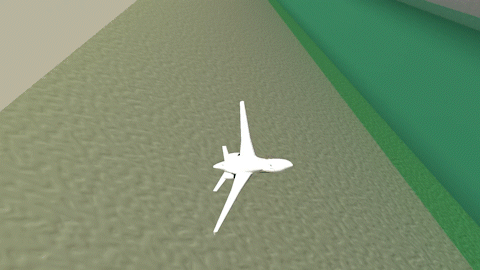New Artificial Intelligence-Based Method Could Develop Better Aircraft Autopilot Systems
A pair of researchers at the Massachusetts Institute of Technology (MIT) have developed a novel method using artificial intelligence (AI) in hopes of producing long-term solutions for aircraft autopilot systems. This study is due to be presented at the Robotics: Science and Systems conference and holds the potential to make aircraft autopilots safer and more reliable.
For the study, the researchers attempted to overcome what’s known as the stabilize-avoid problem, meaning that AI systems are unable to navigate through complex terrain, with the harrowing flight maneuvers to navigate narrow canyons displayed in the film, “Top Gun: Maverick”, as one example. While the human pilots in the film were depicted as successfully accomplishing these maneuvers, an AI system would not be able to accomplish it since the canyons and obstacles would conflict with its system to choose the most direct path. However, the researchers successfully used their new AI-based method to steer a simulated jet aircraft through a narrow passage without crashing.
“This has been a longstanding, challenging problem. A lot of people have looked at it but didn’t know how to handle such high-dimensional and complex dynamics,” said Dr. Chuchu Fan, who is an Assistant Professor in the Department of Aeronautics and Astronautics at MIT, and co-author author of the study.
Traditionally, simple math has been used to try and overcome the stabilize-avoid problem, but these calculations don’t often translate well in real-world scenarios. For this most recent study, the researchers used a method known as reinforcement learning, which is a machine learning method designed to let an agent (in this case, the simulated jet aircraft) learn from their mistakes via trial-and-error while being rewarded throughout the trials as it approaches its goal.
The simulated jet aircraft used in the stusy seen maneuvering through a narrow passage. (Credit: Study authors, Chuchu Fan and Oswin So)
Using reinforcement learning, the researchers were successful in piloting their simulated jet aircraft through a narrow passage without crashing, thus opening the doors for developing controlling mechanisms for more complex robots, like delivery drones, that need to meet specified safety requirements.

(Credit: Study authors, Chuchu Fan and Oswin So)
“We believe that a goal we should strive for as a field is to give reinforcement learning the safety and stability guarantees that we will need to provide us with assurance when we deploy these controllers on mission-critical systems. We think this is a promising first step toward achieving that goal,” he says.
Next steps for this research include enhancing their model by incorporating factors such as uncertainty and how well the model works in real-world situations.
What new discoveries will researchers make about AI and aircraft in the coming years and decades? Only time will tell, and this is why we science!
Sources: arXiv, IMDb, MIT News, TechTarget
As always, keep doing science & keep looking up!









